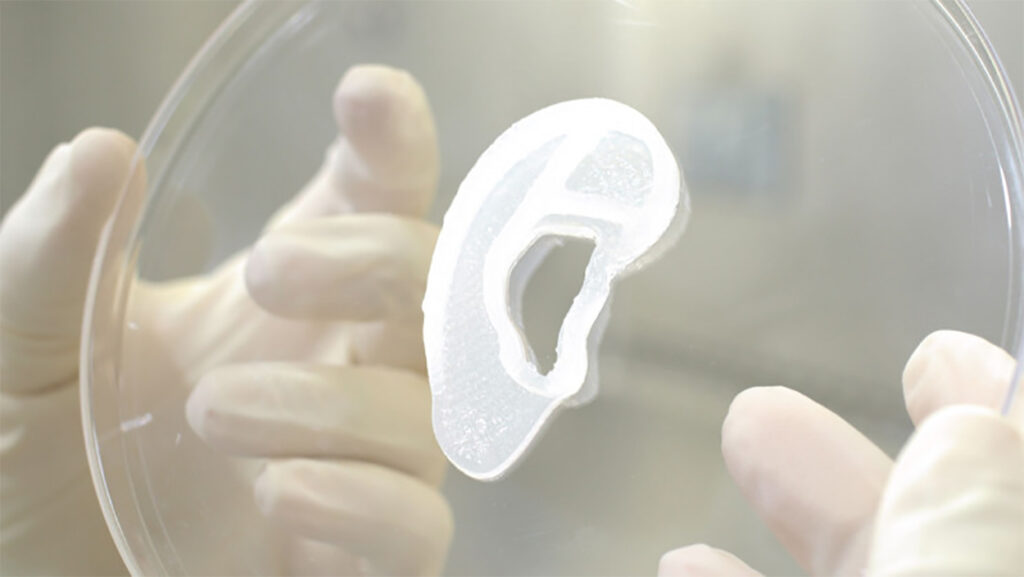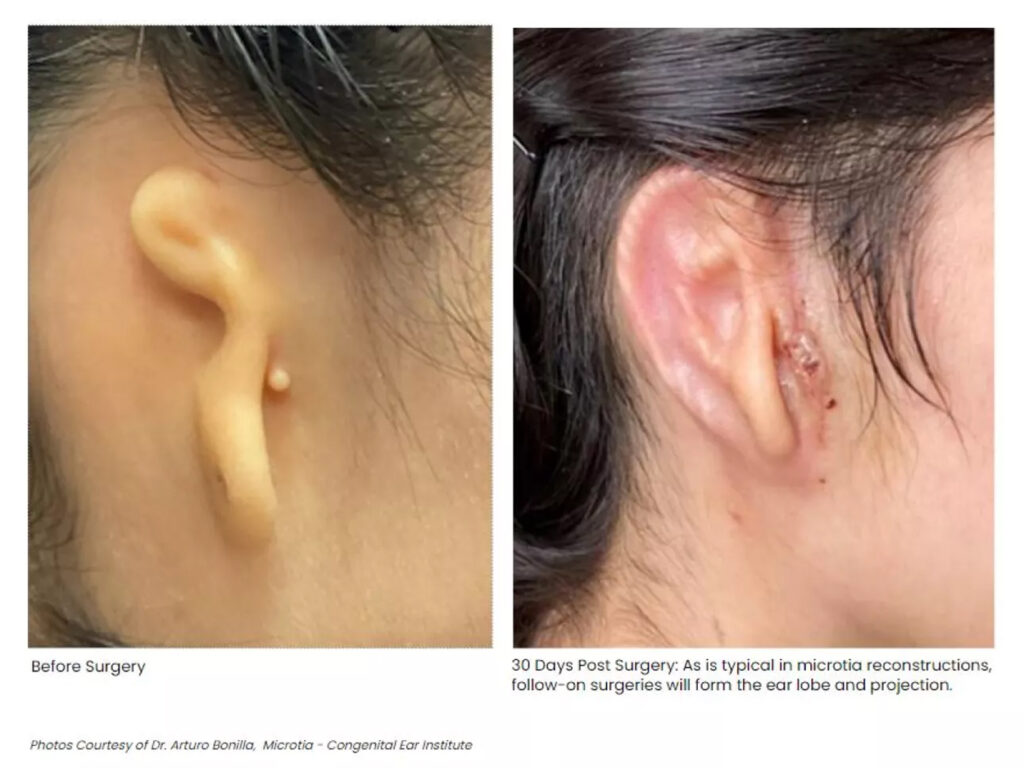A World’s First: Successful Transplant of a 3D-Printed Human Ear Made of Patient’s Living Cells

In a world’s first, a company in New York successfully transplanted a 3D-printed human ear into a female patient with a rare genetic congenital disability. The company used the cells of the patient to create the 3D-printed ear, an outstanding work in tissue engineering.
The biotech company, 3DBio Therapeutics, based in Queens, New York, announced that the 20-year-old patient was born with a congenital disorder. As a result, her right ear was deformed and small. According to 3DBio Therapeutics, they precisely created a mold that matches the patient’s left ear.
They transplanted the ear In March 2022, but they only announced it on June 2, 2022. By this time, the ear is already regenerating cartilage tissue, and over time, it will look and feel like a natural ear.
Is it safe to use 3D-printed organs?
It is too early to say if using 3D-printed organs is safe. However, 3DBio explained that federal regulators reviewed their trial design. They set rigid manufacturing standards and required 3DBio to publish their trial data in a medical journal when they complete their study.
The 3D-printed ear transplant was part of 3DBio’s larger clinical trial. They have 11 other patients who will also undergo transplant procedures, so there is a possibility that some of the patients will reject the transplant.
However, their expectation is higher because they used the cells for the 3D-printed ear from the patients. Many experts in the medical field are hoping that there will be more developments in using animal organs or 3D printed ones. This is because they want to extend the life of donor organs. There are promising results, as a donor liver, perfectly preserved for three days, was successfully transplanted into a patient by Swiss doctors one year ago. This is unprecedented because, in the past, the maximum time to store a liver is 12 hours.

New hope for the 3D printed ear recipient
Although the patient’s journey is not yet over, she is hopeful that it will help her overcome her concerns. She was born with microtia, a rare genetic defect where the external ear is not formed correctly or missing.
The patient, a young woman from Mexico, said her ear defect started to bother her when she was in her teens. Some people who saw her defect said insensitive things, and she became self-conscious. While she covered her ears with her long hair, she is looking forward to the day when she can tuck her hair behind her ears or gather her hair in a ponytail.
Pioneering work
3DBio Therapeutics said they want to treat people with microtia. The company added that the 3D-printed ear used living tissue, combined with AuriNovo, a product for outer ear reconstruction. Dr. Arturo Bonilla, founder of the Microtia-Congenital Ear Deformity Institute (San Antonio, Texas) and ear reconstructive surgeon, led the surgery.
Dr. Bonilla said that the study/clinical trial would allow them to investigate the aesthetic and safety properties of the novel procedure. In an interview, the doctor added that it could replace the existing outer ear reconstruction techniques that include taking cartilage from the patient’s ribs or using porous polyethylene (PPE) implants.
In this pioneering procedure, the team scanned the patient’s good ear to produce a blueprint. They then collected samples of the ear cartilage cells and grew them in the lab to have enough quantity for printing. Next, they mixed the cells with a collagen-based bio-ink and printed the material to form the outer ear.
A printed biodegradable shell initially surrounds the implant to give it support and stability. The patient’s body will absorb the shell eventually. As a result, the implanted ear will mature over time and develop the ear’s natural look, feel, and elasticity. However, the patient will still need further surgeries to fix the projection and form the earlobe.
Doctors are hopeful that they could soon use 3D printed implants for cartilage-related conditions such as rotator cuff tears in shoulders, damaged meniscus in the knee, breast reconstruction, and nose injuries or defects.